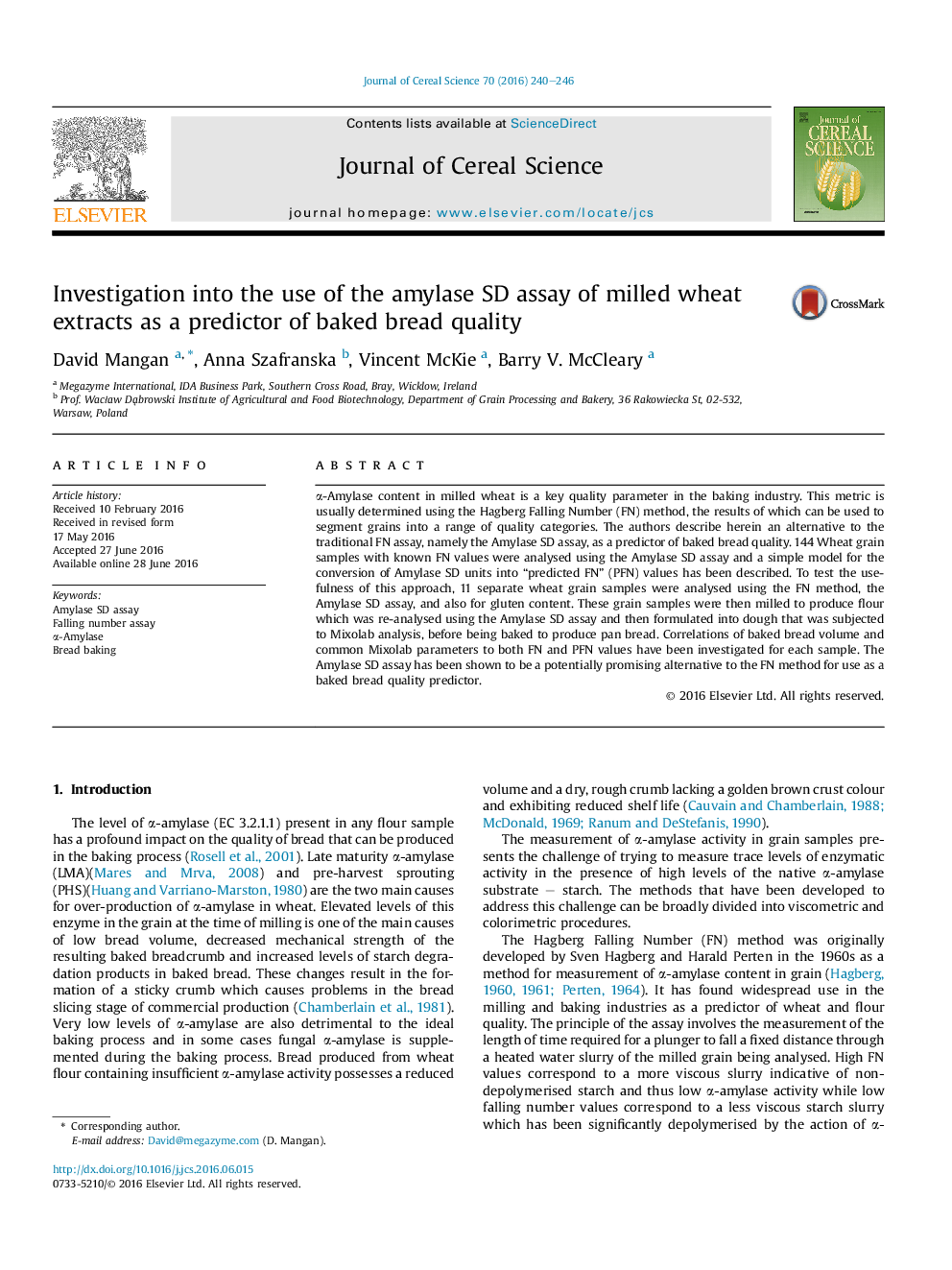| Article ID | Journal | Published Year | Pages | File Type |
|---|---|---|---|---|
| 4515500 | Journal of Cereal Science | 2016 | 7 Pages |
•The Amylase SD assay is evaluated as a predictor of baked bread quality.•A new parameter, PFN, is presented for simple comparison to Falling Number data.•Bread baked from flour obtained from grain analysed by both methods is evaluated.•Mixolab analysis is performed to attempt to better understand deviations observed.•The Amylase SD assay may be a potential alternative to the Falling Number method.
α-Amylase content in milled wheat is a key quality parameter in the baking industry. This metric is usually determined using the Hagberg Falling Number (FN) method, the results of which can be used to segment grains into a range of quality categories. The authors describe herein an alternative to the traditional FN assay, namely the Amylase SD assay, as a predictor of baked bread quality. 144 Wheat grain samples with known FN values were analysed using the Amylase SD assay and a simple model for the conversion of Amylase SD units into “predicted FN” (PFN) values has been described. To test the usefulness of this approach, 11 separate wheat grain samples were analysed using the FN method, the Amylase SD assay, and also for gluten content. These grain samples were then milled to produce flour which was re-analysed using the Amylase SD assay and then formulated into dough that was subjected to Mixolab analysis, before being baked to produce pan bread. Correlations of baked bread volume and common Mixolab parameters to both FN and PFN values have been investigated for each sample. The Amylase SD assay has been shown to be a potentially promising alternative to the FN method for use as a baked bread quality predictor.
